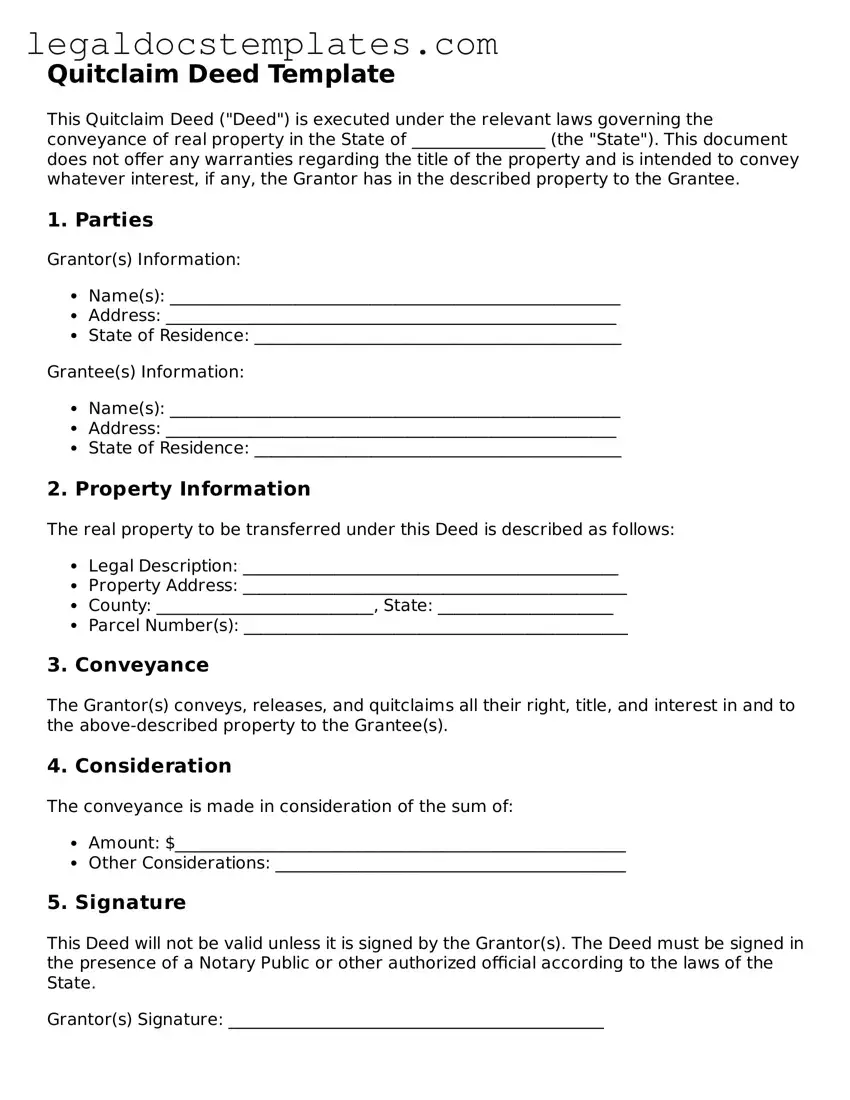Quitclaim Deed Template
This Quitclaim Deed ("Deed") is executed under the relevant laws governing the conveyance of real property in the State of ________________ (the "State"). This document does not offer any warranties regarding the title of the property and is intended to convey whatever interest, if any, the Grantor has in the described property to the Grantee.
1. Parties
Grantor(s) Information:
- Name(s): ______________________________________________________
- Address: ______________________________________________________
- State of Residence: ____________________________________________
Grantee(s) Information:
- Name(s): ______________________________________________________
- Address: ______________________________________________________
- State of Residence: ____________________________________________
2. Property Information
The real property to be transferred under this Deed is described as follows:
- Legal Description: _____________________________________________
- Property Address: ______________________________________________
- County: __________________________, State: _____________________
- Parcel Number(s): ______________________________________________
3. Conveyance
The Grantor(s) conveys, releases, and quitclaims all their right, title, and interest in and to the above-described property to the Grantee(s).
4. Consideration
The conveyance is made in consideration of the sum of:
- Amount: $______________________________________________________
- Other Considerations: __________________________________________
5. Signature
This Deed will not be valid unless it is signed by the Grantor(s). The Deed must be signed in the presence of a Notary Public or other authorized official according to the laws of the State.
Grantor(s) Signature: _____________________________________________
Date: ___________________________
State of _____________, County of ________________
Subscribed and sworn to (or affirmed) before me on this ___ day of ___________, 20__, by ___________________________________________ (name(s) of signatory(ies)).
Notary Public: ___________________________________________________
My commission expires: ___________________________________________
6. Recordation
To perfect the transfer of title to the Grantee(s), this Deed should be recorded with the County Recorder's Office or other appropriate government office in the county where the property is located promptly after execution. The responsibility for recording the Deed and any associated fees are generally borne by the Grantee(s).
Disclaimer
This template is provided 'as-is' without any warranty of any kind, expressed or implied, statutory or otherwise. Any use of this template is at your own risk, and should be reviewed by an attorney in your jurisdiction before being used as a legal document. By using this template, you understand that there is no attorney-client relationship between you and the creators or distributors of this template. This template is not a substitute for the advice of an attorney.
